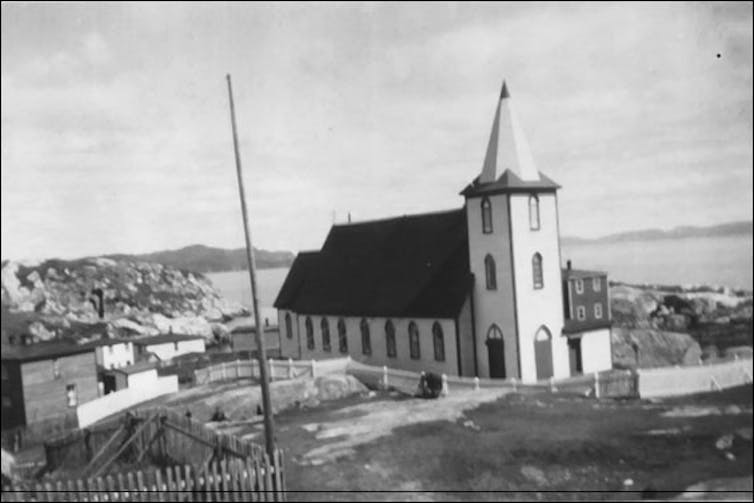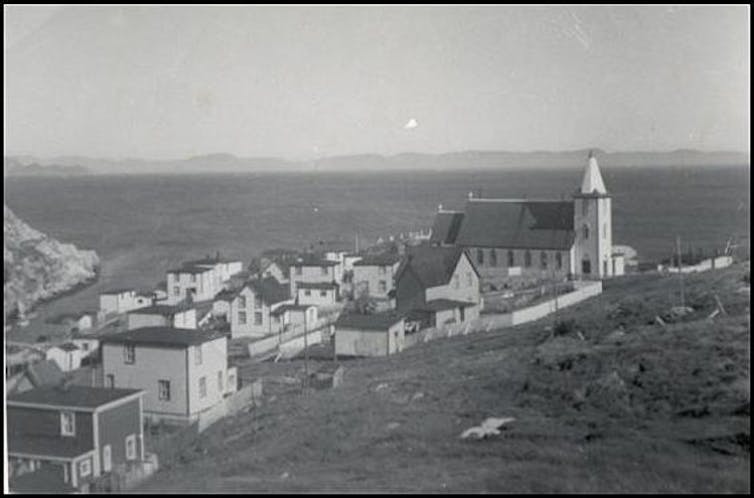Between 1954 and 1975, 30,000 Newfoundlanders and Labradorians resettled from hundreds of remote communities to larger towns. The relocations were part of a plan by the provincial and federal governments to move people to areas with better economic opportunities, social amenities and improved educational facilities.
Today, there are only a handful of isolated communities in Newfoundland and Labrador. The provincial government continues to provide relocation assistance if at least 75 per cent of residents vote to resettle elsewhere. Residents of Gaultois, N.L., the most recent community to vote on resettlement, did not reach the 75 per cent threshold needed to relocate.
Most families that moved under earlier resettlement programs found employment, better schools and modern conveniences, such as running water, electricity and an end to their isolation. However, many also endured mental anguish and trauma from being thrust into new communities with little social or economic support. The governments that relocated them were not there to help them.
Resettlement began as a provincial policy in Newfoundland and Labrador in the 1950s, and the Government of Canada joined the program in 1965, sharing the cost of resettling thousands of residents from small rural communities.
Resettled families did not receive adequate compensation for property such as land, sheds and fishing premises left behind, and were rarely provided with sufficient funds to build new lives in their new communities.
The resettlement of Pushthrough
When our family resettled from Pushthrough, N.L. to Hermitage, N.L. in 1969, our mother received $2,428 from both governments. That covered half the cost of a new home purchased for $5,000. My grandmother received $1,200 for her home, outbuildings and land she left behind; certainly not enough to build a new home.
Our mother had no savings and the $240 cheque she received monthly from worker’s compensation after our father was killed in an industrial accident in 1966 was barely enough for the family to survive.
Finances were only one source of stress for resettlement families. Resettled people were uprooted and moved to new communities where they were regarded as outsiders for years.
The state did not seem to care. It never provided any mental or social supports for those thousands dealing with anxiety and stress of all sorts. Resettlement people were often victims and faced trauma and anxiety that were either dismissed or simply ignored.
(Maritime History Archive, Memorial University)
Impacts of resettlement
In 2017, we wrote an article about the Newfoundland resettlement program. We did not romanticize isolated Newfoundland communities. Nor did we lament the passing of those communities like Pushthrough.
As our article circulated, a large number of resettlement people reached out to us with their riveting, often heart-wrenching stories, recalling the trauma, hurt and anguish they experienced.
Many were children at the time, and they recounted stories of bullying, abuse and being othered in their new communities. Many dealt with their untenable situation by quitting school.
We heard from one woman teased relentlessly about her clothes and general appearance in her new school. Her lunch money was stolen regularly, she remembers, and the image of being “the laughing stock of the school” is seared permanently in her memory.
The bullying was so relentless her parents contacted the priest who then had the teacher place the young child in the back of the classroom, hoping she escaped the mocking mental abuse she endured.
“Looking back today,” she recalls, “it was bullying that I had encountered. I dropped out of school that same year and went to work on the fish plant. I could not take it anymore.”
Others related similar experiences that have plagued them all of their lives. Another individual who moved a short distance to a new town in Fortune Bay said it was like moving to a different world. She was only 12 when her family resettled and just two years later she was diagnosed with a stomach ulcer, all from worrying and loneliness. “I’m 60,” she said, “And I never really ever got over the trauma of resettlement.”
Another told us that his family moved in 1969 when their school closed, mail service stopped and the coastal boat ceased calling at their community. His family received just over $2,000 to move everything they owned. With that, they had to rebuild their lives in a new community.
Others remember living in houses that were no better than shacks or living in partially finished homes because their parents had not received enough in resettlement funds to complete their homes. Many houses were finished only when families could afford to purchase building materials.

(Maritime History Archive, Memorial University)
Acknowledging consequences
State planners in Ottawa and St. John’s saw considerable benefit in resettlement in the 1960s and 1970s as they do today. They believed redistributing the population would facilitate economic development and provide citizens living in what they considered non-viable outport communities with essential educational, medical and social services.
Today, the relocation policy is about saving the provincial government money in providing services, such as ferry connections, electricity and medical services, to remote communities.
There were improvements for many people who resettled, but also deep costs that the provincial and federal governments never considered.
It is time we understand the impact of resettlement on thousands of people relocated from their communities. Government policies can cause harm and leave a legacy of trauma and hurt, even if those actions occurred a generation ago.
The Newfoundland Resettlement Program had severe social consequences, and caused anguish that people are still dealing with to this day. Newfoundland and Labrador’s current community relocation program is different from what it was in the 1960s and 1970s but the consequences for those citizens who were resettled should not be forgotten by governments as communities continue to contemplate resettlement.
This article was co-authored by Hayward Blake, a former instructor and coordinator at the Faculty of Education at Memorial University of Newfoundland.




